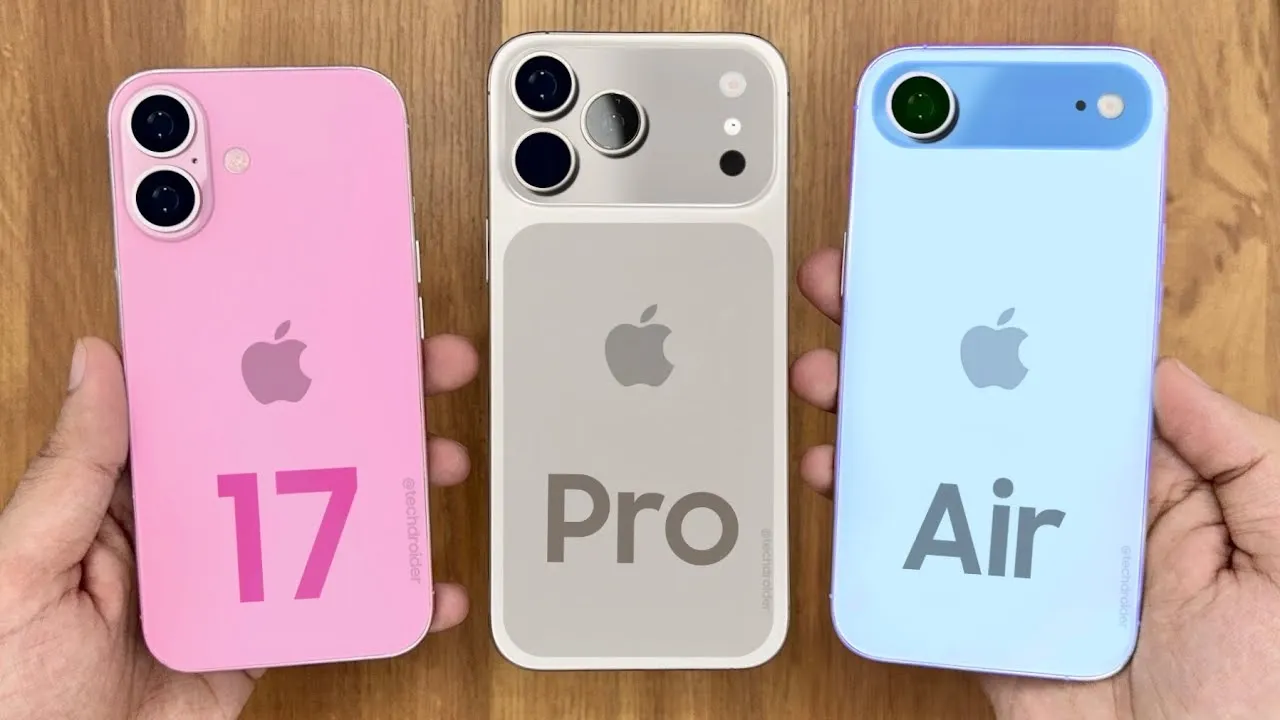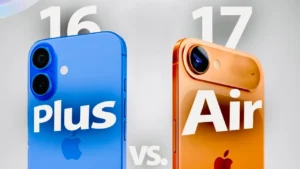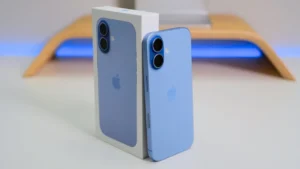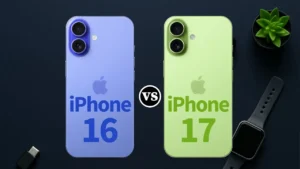The moment I got my hands on the new iPhone 17, I did what any self-respecting tech enthusiast would do: I immediately put the camera through its paces. My in-depth iPhone 17 camera test has been one of the most anticipated reviews I’ve planned all year, and folks, the hype is real. Apple didn’t just give us an incremental update; they’ve delivered a seismic shift in what we should expect from the camera in our pocket.
For years, we’ve seen smartphones inch closer to the quality of professional DSLRs and mirrorless cameras. With the iPhone 17, that gap has become almost imperceptibly small. From a completely redesigned sensor system to AI-powered computational photography that feels like magic, this isn’t just a new camera—it’s a new way to think about capturing the world around you.
In this comprehensive review, we’re going to dive deep into every new feature. We’ll look at real-world examples and explore how these upgrades perform not just on a spec sheet, but in the situations that matter most to you—from dimly lit restaurants to bright, sunny landscapes. Let’s get started.
Contents
- 1 1. The All-New 48MP Sensor Trifecta: More Than Just Megapixels
- 2 2. The Periscope Zoom Revolution: Getting Closer Than Ever
- 3 3. Liquid Lens Technology: Focus in the Blink of an Eye
- 4 4. AI-Powered “Director Mode”: Your Personal Film Crew
- 5 5. Next-Generation Photonic Engine: The Brains Behind the Beauty
- 6 6. Upgraded Center Stage Front Camera: Selfies and Video Calls Reimagined
- 7 7. ProRes RAW and Log 2 Video: Professional Power for Everyone
- 8 iPhone 17 Camera Test: The Final Verdict
1. The All-New 48MP Sensor Trifecta: More Than Just Megapixels
For the first time, Apple has equipped the entire rear camera system with 48-megapixel sensors. That’s right—the Main, the Ultra-Wide, and the Telephoto lenses all get the high-resolution treatment. While the iPhone 16 Pro had a 48MP main sensor, bringing this power to all three lenses is a complete game-changer.
But as we all know, more megapixels don’t automatically mean better photos. The real magic is in how Apple uses them. By default, the iPhone 17 uses pixel binning, combining four pixels into one large “quad-pixel.” This process results in a stunning 12MP final image that is bursting with detail and boasts an incredible dynamic range. Most importantly, it dramatically improves low-light performance by capturing more light data.
During my iPhone 17 camera test, the difference was immediately obvious in night shots. Where my iPhone 16 Pro would sometimes produce slightly noisy or soft images in very dark conditions, the iPhone 17 delivers shots that are crisp, clean, and vibrant. The colors are true-to-life without that overly processed, artificially brightened look you see from some other brands. For photographers who want maximum control, you can easily switch to ProRAW mode and capture the full 48MP image, giving you unprecedented editing flexibility.
2. The Periscope Zoom Revolution: Getting Closer Than Ever
This is the feature we’ve all been waiting for. The iPhone 17 Pro and Pro Max finally incorporate a revolutionary periscope zoom lens system. This is a huge leap forward from the standard telephoto lenses of the past. By using a prism to bend light at a 90-degree angle, Apple has managed to fit a much longer lens array inside the phone’s slim body.
What does this mean for you? A jaw-dropping 8x optical zoom.
Let me be clear: this is not a grainy digital zoom. This is pure, lossless optical quality. I took the iPhone 17 to a baseball game, sitting in the upper deck, and the results were astonishing. I could zoom in on the batter’s box and capture the expression on the player’s face with crystal clarity. The optical image stabilization (OIS) on the periscope lens is also remarkably steady, making it easy to frame your shot even at full zoom without needing a tripod.
This level of zoom opens up entirely new creative possibilities:
- Wildlife Photography: Capture detailed shots of birds or other animals from a safe distance.
- Concerts & Events: Get incredible close-ups of the stage, even from the back rows.
- Architecture: Isolate intricate details on buildings that are far away.
- Portrait Compression: The longer focal length creates beautiful, natural-looking portraits with stunning background separation.
This single feature makes the iPhone 17 feel less like a smartphone camera and more like a bag full of professional lenses.
3. Liquid Lens Technology: Focus in the Blink of an Eye
Another groundbreaking innovation in this iPhone 17 camera test is the introduction of Liquid Lens technology in the main camera. Instead of physically moving glass elements to achieve focus, a liquid lens uses an electrical current to change the shape of a small pocket of optical-grade fluid.
The result is autofocus that is virtually instantaneous.
I tested this by trying to photograph a fast-moving puppy in my backyard. With previous phones, I’d often get a few blurry shots before the focus locked on. With the iPhone 17, nearly every single shot was perfectly sharp. The camera locks onto the subject’s eyes with an almost preternatural speed and accuracy.
This lightning-fast AF is also a massive benefit for videographers. When panning or tracking a moving subject, the focus transitions are silky smooth, with none of the distracting “hunting” you can sometimes see as a camera struggles to find its focal point. This technology, combined with the new AI features, makes focusing a complete non-issue. You just point, shoot, and trust that your image will be sharp.
Read Also: iPhone 17 Battery Test: My 7-Day Ultimate Trial Reveals One Game-Changing Truth
4. AI-Powered “Director Mode”: Your Personal Film Crew
Apple’s A19 Pro chip isn’t just faster; it’s a computational photography powerhouse. The new “Director Mode” is the star of the show when it comes to video. This feature uses advanced AI and the power of all three lenses to give you unprecedented creative control while filming.
When you engage Director Mode, the iPhone 17 records video from the Ultra-Wide, Main, and Telephoto lenses simultaneously. While you’re filming, you can see all three feeds on your screen and seamlessly switch between them with a simple tap, creating dynamic, multi-camera-style edits in real-time.
But it gets even better. The AI can also identify the primary subject in your frame and automatically create a smooth “rack focus” effect. Imagine you’re filming a friend talking, and someone walks up behind them. You can simply tap on the person in the background, and the iPhone will smoothly shift focus from your friend to the new subject, creating a truly cinematic effect that used to require a professional focus puller.
This mode is an absolute game-changer for content creators, vloggers, and even parents who just want to capture more dynamic videos of their kids. It’s intuitive, powerful, and genuinely fun to use.
5. Next-Generation Photonic Engine: The Brains Behind the Beauty
The Photonic Engine, Apple’s advanced image processing pipeline, has received a massive upgrade. It now analyzes even more data from the new 48MP sensors before the image is compressed. This advanced form of computational photography is what truly sets the iPhone 17 apart.
During my iPhone 17 camera test, I noticed its impact most in challenging, high-contrast scenes. Think of a sunset where you have bright highlights in the sky and deep shadows in the foreground. The Photonic Engine masterfully balances the exposure, retaining incredible detail in both the brightest and darkest parts of the image without making it look unnatural or overly “HDR.”
It also excels at rendering textures and fine details. When taking a close-up of a flower, I could see the delicate texture of the petals and individual grains of pollen. For portraits, it renders skin tones with stunning accuracy and preserves details like freckles and hair, avoiding the overly smooth, plastic look that plagues some other smartphone cameras.
This intelligent processing happens in the background every time you press the shutter, ensuring that the photos you take are the best possible representation of the scene you witnessed. You can find more technical information about the principles of computational photography on authoritative sites like DXOMARK, which often dives deep into sensor and processing technology.
6. Upgraded Center Stage Front Camera: Selfies and Video Calls Reimagined
Apple hasn’t forgotten about the front-facing camera. The TrueDepth camera system now features a new 18MP sensor with a wider aperture and, for the first time, Center Stage.
Center Stage, a feature previously found on iPads, uses the new ultra-wide front lens and machine learning to keep you perfectly framed during video calls. If you move around the room, the camera digitally pans and zooms to follow you. If someone else joins you in the frame, it automatically zooms out to include them. It makes FaceTime and other video calls feel more natural and engaging.
The image quality for selfies is also noticeably better. The new sensor captures more light, resulting in brighter and cleaner photos, especially indoors or at night. Portrait Mode on the front camera is also more accurate, with better edge detection around hair and glasses. For anyone who uses their phone for video conferencing or loves taking selfies, this is a very welcome upgrade.
7. ProRes RAW and Log 2 Video: Professional Power for Everyone
For serious filmmakers and videographers, the iPhone 17 Pro models now support shooting in ProRes RAW and a new Log 2 video profile. This is a massive deal.
- ProRes RAW combines the flexibility of RAW data with the incredible performance of ProRes codecs. It gives filmmakers maximum control over tweaking details like exposure, color, and white balance in post-production.
- Log 2 Video is a flat color profile that captures the maximum possible dynamic range from the camera’s sensor. While the footage looks washed out straight from the camera, it holds a tremendous amount of information in the highlights and shadows. This gives professional colorists the ultimate canvas to apply their color grades and achieve a specific cinematic look.
While these features might be overkill for the average user, their inclusion solidifies the iPhone 17’s position as a legitimate tool for professional video production. To be able to capture this level of quality on a device that fits in your pocket is simply incredible.
iPhone 17 Camera Test: The Final Verdict
After spending countless hours shooting photos and videos, this iPhone 17 camera test has convinced me of one thing: this is the most significant leap in mobile photography we have seen in years. Apple didn’t just improve one aspect of the camera; they overhauled the entire system, from the hardware to the software that powers it.
The combination of the 48MP sensor trifecta, the game-changing 8x periscope zoom, and the mind-blowingly fast Liquid Lens autofocus creates a shooting experience that is both powerful and effortless. Add in the creative potential of Director Mode and the professional-grade video options, and you have a device that truly empowers everyone, from casual users to seasoned pros, to capture stunning imagery.
If the camera is one of the most important features for you in a smartphone, the iPhone 17 is not just an upgrade; it’s an investment in your creativity.
***




